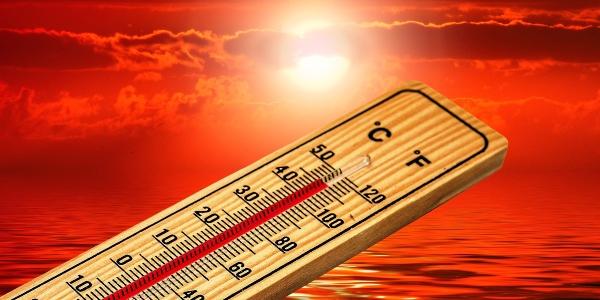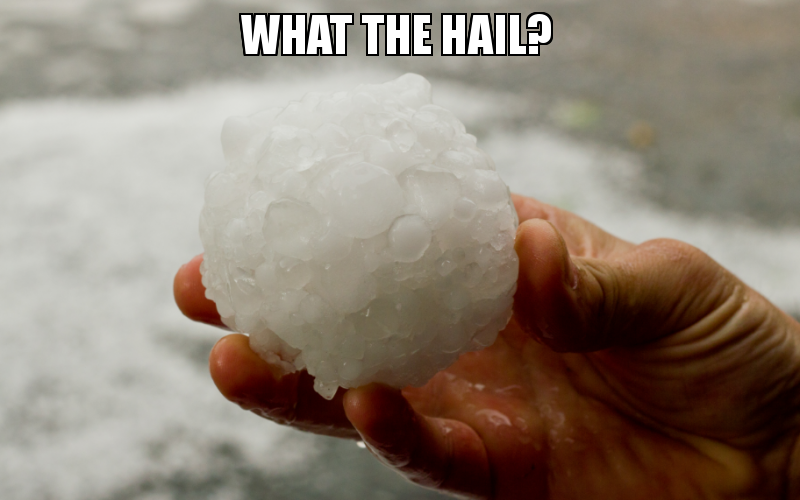Build a Better Heat Illness Prevention Program

By Gary Auman, MRCA.
As OSHA declares a National Emphasis Program (NEP) for heat illness prevention, it’s important to check and bolster your heat prevention programs at construction sites.
The summer heat is here, and it is not messing around. Heat waves are again setting record highs and the days are staying hotter for longer. As the weather continues to heat up and the summers get hotter, what does this mean for you as an employer? Everyone is impacted by unusually high temperatures, but the construction industry is especially vulnerable.
In an article from the Midwest Roofing Contractors Association (MRCA), Gary Auman discusses and updates you on the significant hazards the heat can pose to employees and your obligation to protect your workforce. He highlights that one of the biggest changes OSHA has made in heat illness prevention in 2022 is the declaration of a National Emphasis Program (NEP) for heat illness prevention. Declaring a NEP creates a probable cause to conduct inspections in high risk for heat illness industries.
Before NEP, compliance to heat illness prevention meant considering whether the employer was employing feasible and useful methods to correct the hazard, such as immediate access to water, rest and shade, an acclimatization program, implementing a work/rest schedule and providing climate controlled cool down areas. Now that we have the NEP, OSHA has added some additional points for compliance officers to look for:
1 - Does the employer have administrative controls in place?
2 - Is the employer using a buddy system?
3 - Do workers have access to cool water?
4 - Does the employer require hydration breaks and rest breaks?
5 - How is the employer monitoring ambient temperatures and levels of work exertion?
The above questions clarify the responsibilities of employers in preventing heat illness on the job site. As an employer, you must remember that heat illness can be very insidious in its development and devastating in its results. Unfortunately, we often do not realize the danger of heat illness until it is too late.
Pay attention to heat index
Remember to pay close attention to daily temperature extremes on your job sites and the heat indexes which flow from them, as OSHA guidance focuses on the heat index at the work site, not the temperature.
The OSHA Heat Index App for your smart phone: Heat Safety Tool/ Occupational Safety and Health Administration (osha.gov) is an excellent tool for ensuring that you are aware of the heat index at any location at which you are working. Additionally, the app provides you with a list of precautions you should take to protect your employees, a list of symptoms employees will exhibit if they are suffering from heat related illnesses and first aid steps to mitigate heat illness.
General Duty Clause and feasible steps to preventing heat illness
OSHA continues to enforce heat illness protection through application of the General Duty Clause, this clause of the Occupational Safety and Health Act of 1970 requires employers to provide their workers with a place of employment that is free of recognized hazards. OSHA has been successful in enforcing this Clause against employers for heat illness prevention.
While the first goal is to protect your employees, not avoid litigation citations, the obvious way to avoid this dilemma is to take heat illness seriously and either download the app (it is a very good idea to have all of your site supervisors have the app) or comply with the five steps set out in the NIOSH Criteria Document for the prevention of heat illness.
If you choose not to use the app, use the NOAA heat index chart (Heat Forecast Tools (weather.gov)) and cross reference the temperature and humidity to get the heat index. The following steps are what OSHA considers to be feasible steps under the General Duty Clause an employer can take to prevent heat illness in its employees:
1 – Establish an acclimatization period to ensure that all employees new to high heat index are gradually exposed to full-duty at that location.
2 - Establish a work/rest regimen. If you look at the OSHA - NIOSH heat app, you will see four categories of risk which require protection for employees working in that environment. These categories range from low risk to extreme risk. Most employers vary their work/rest regimen based upon the heat index at any given location.
3 - Establish a hydration schedule. If you look at any of the four risk categories on the heat illness app, you will note that they all indicate the necessity of water and shade. In fact, OSHA urges employees to always consider water, rest and shade to protect employees from heat illness.
4 - Provide shade or a climate-controlled area for employees for cooling-off periods. You should set up cool shaded rest areas with close proximity to the jobsite. OSHA also suggests that you provide shade, hats and sunscreen and encourage employees to use them when working in a high heat index environment and/or direct sunlight.
5 - Training. You should train your employees on all the illnesses that can arise from working in a high heat index environment, the hazards of those conditions, as well as the symptoms that individuals experience in each of those conditions. Your employees should additionally be trained in how to recognize symptoms in themselves and others and the first-aid steps that should be taken for each condition.
Conclusion
Heat illness prevention is a safety precaution; you should thus develop your own heat illness prevention program with the tools available in order to best protect your employees from heat illness and its consequences. Remember to document each step you take as you move forward to develop your heat illness prevention program and implement it.
Ultimately, it is your responsibility as an employer to provide a place of employment for your employees that is free of recognized hazards that are causing or likely to cause death or serious physical harm. Therefore, you must enforce these prevention procedures and supervise to ensure all employees are in full compliance with your heat illness prevention program whenever the heat index goes above minimal risk.
Don't forget about MRCA's Safety Manual Template! This template is meant for contractors to pick out the parts of the template that pertain to their company, and to develop their own policies that work for them. Get your safety template today!
Learn more about MRCA in their RoofersCoffeeShop® Directory or visit www.mrca.org.
*REMINDER* MRCA has a Legal Services Program established with Auman, Mahan & Furry that allows members one free consultation up to 30 minutes per month via phone, email or office conference. To take advantage of this, please contact Gary Auman at 937-223-6003.






















Comments
Leave a Reply
Have an account? Login to leave a comment!
Sign In